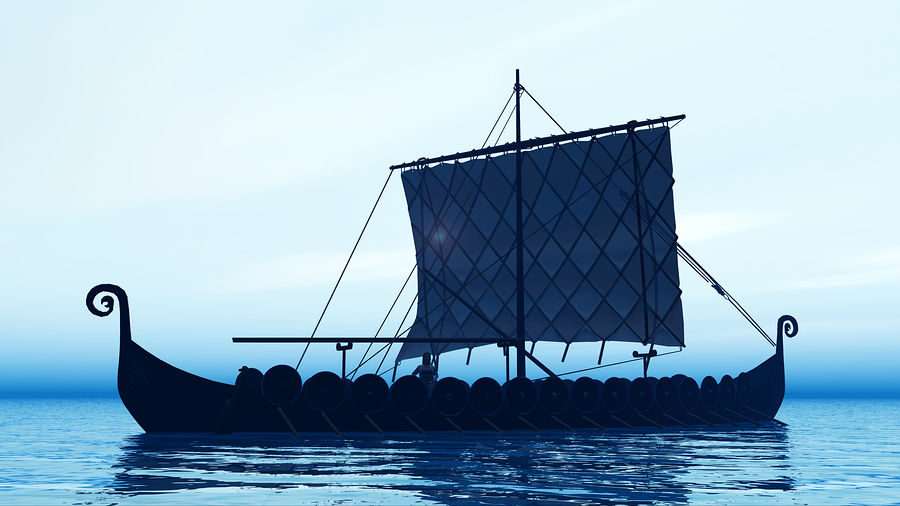
Archaeologist Sarah H. Parcak said that the find indicates either "an entirely new culture that looks exactly like the Norse, or its the westernmost Norse site that's ever been discovered."
Archaeologists using infrared images from a satellite 400 miles above earth have found strong evidence of a second Viking settlement in North America. The site, which was discovered last summer, is in Canada, on the southwest coast of Newfoundland. It is about 300 miles south of the only confirmed Viking settlement on the continent, which was discovered in 1960. Since that finding, archaeologists have been hunting without success for Viking landmarks in America that would have predated Columbus by 500 years.
Sarah H. Parcak is a leading space archaeologist working with Canadian experts and the NOVA science series, which is making a 2-hour television documentary. Vikings Unearthed will air on PBS next week. Parcak made the discovery along the coast between Baffin Island and Massachusetts. The “hot spots” revealed by the infrared images led to further examination. Magnetometer readings showed elevated iron readings at a remote site the researchers call Point Rosee.
Trenches were dug in the area that exposed Viking-style turf walls as well as ash residue, a fire-cracked boulder and roasted ore known as bog iron, all signs of metallurgy not consistent with the known native people of the region. Radiocarbon testing dated the materials to the Norse era. Scientists also found the site promising for Viking habitation due to the lack of historical objects associated with other cultures.
Parcak said that the find indicates either “an entirely new culture that looks exactly like the Norse, or its the westernmost Norse site that’s ever been discovered.”
Many previous searches of promising sites have led to disappointment, so scientists are trying not to get their hopes too high. However, according to Douglas Bolender of the Department of Anthropology at the University of Massachusetts, Boston and research assistant professor at Andrew Fiske Memorial Center for Archeological Research, there is no alternative evidence that the site is anything other than Norse. He said a buried structure there could be a smithy for making longboat weaponry and nails, which would be a strong indicator of Viking presence.
Parcak’s researched used a commercial satellite called WorldView-3 to search known Norse sites on the tiny island of Papa Stour in Scotland. The satellite used infrared technology to detect buried walls. Digging revealed some viking artifacts. Parcak then switched her search to the coastline between the Canadian Arctic and New England, where the hot spots were revealed.
Digging at the site will resume this summer.

Leave a Reply